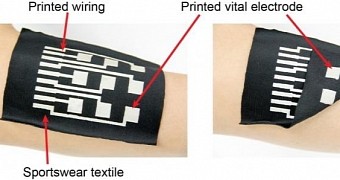Although not many truly revolutionary things have come out recently in the IT industry, the guys at Tokyo University have brought us something entirely innovative, with vast implications for a multitude of industries.
The Japanese researchers have developed a new conductive ink that would allow electronics to be printed on stretchable fabrics, leading to the possibility of wearing a conductive shirt in the near future. Also, the process would be just as easy as screen-printing any T-shirt design.
Although the intelligent apparel industry is only just in its infancy, it is also one of the most advanced in the world, with smart bikes and snickers that change color and design being forefront examples of practical, smart apparel.
According to the university's own claims, the “current printed electronics, such as transistors, light emitted diodes, and solar panels, can be printed on plastic or paper substrates, but these substrates tend to be rigid or hard. The use of soft, stretchable material would enable a new generation of wearable devices that fit themselves to the human body.”
Future shirts could measure your heart rate
To achieve elastic and also highly conductive wiring without being a pain to print on any textile, Professor Takao Someya has invented an ink made of silver flakes, organic solvent, fluorine rubber and fluorine surfactant. This new mixture, when printed on flexible material, exhibits high conductivity even when stretched to more than three times its original length. After obtaining high conductivity and stretchability with a simple one-step printing process, all sorts of products could be invented.
Researchers think about printing shirts and other articles of clothing that can monitor vital signs like heart rate, pulse and muscle movements in the same way FitBit and Apple Watch do. Embedding FitBit chips into modern-day clothing may prove uncomfortable, but having smooth and elastic clothes that will have the same role could actually change the way we perceive comfort while being literally dressed in technology.

 14 DAY TRIAL //
14 DAY TRIAL //